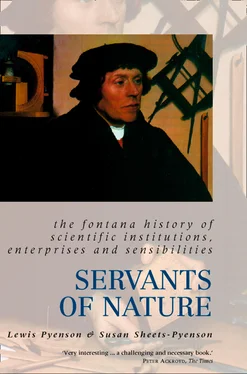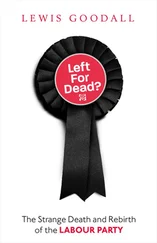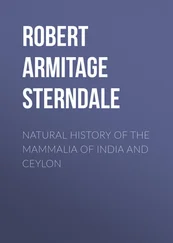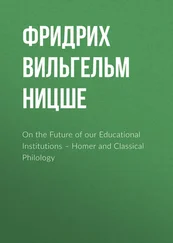Student-masters or the senior professors – the doctores – could hold courses under a wide range of institutional shelter. These shelters derived from the ‘nations’ – the protective associations for foreign students that were loosely affiliated with regional origins. By the late medieval period, the shelters were variously called fraternitates, societates, congregationes, corpora, paedagogia, contubernia, regentia, aula, collegia , or bursae; these fraternities, halls, and colleges had as principal or rector a master who was accredited by the university and was responsible for organizing instruction and overseeing living accommodation. In many cases the halls emerged as an act of charity with stipulations (regarding who might join, for example) reminiscent of stipulations involved in the Islamic charitable trusts that endowed madrasas. The system encouraged a division of the student body into hierarchies of wealth and privilege.
Universities, indeed, were confederations of constituencies – the faculties, the colleges, and all those from maids to apothecaries, copyists, stationers, and later book printers who came under academic protection. Students in many cases ran the show. In southern France, Iberia, and eastern Europe, students not infrequently controlled university offices, notably those of councillor and rector. At Bologna, the student nations had proctors, bursars, and beadles, and they managed considerable amounts of cash. Indeed, masters at Bologna and Padua (both institutions were known as students’ universities) organized into doctoral colleges just to defend their interests; in the Paris arts faculty, the masters controlled the nations – and their treasuries. The constituencies took diverse forms across Europe, but they were everywhere at the organizational centre of things. The familiar name of the University of Paris, the Sorbonne, derives from a college founded by Robert of Sorbon (1201– 1274), royal chaplain and canon of Notre Dâme Cathedral.
The collegiate structure continued for a long time at a number of universities. The most famous examples are the colleges still at the base of the universities of Oxford and Cambridge, but colleges figure in the life of other universities as well, notably Pavia. As late as the middle of the eighteenth century, Paris had ten residential colleges. The ambiguity attached to the word ‘college’ – certainly a learned connotation but otherwise unspecified with regard to level – persists up to our time. North-American colleges function variously as faculties or dormitories at universities, while in the Latin world a college is the usual designation for a secondary school. One of Montreal’s most distinguished private schools, Lower Canada College, now instructs a class of six-year-olds; Montreal’s most distinguished university, McGill, includes Victoria College, a women’s dormitory. In Paris and Mexico City there are national colleges with professors who devote most of their time to research. At Rome and Washington, special colleges convene from time to time to choose a new pope or president. In all these instances we find the notion of a common pursuit.
The waning of the Middle Ages led to vesting ultimate academic authority in the faculties on the one hand, and to a levelling of the student body on the other hand. The masters appropriated the collegiate model for their own ends. But the medieval legacy is not hard to spot today. In addition to faculty senates and directors of residential life, we have university fraternities and privately endowed student societies, residential colleges and dining clubs, concessions (bookstores, presses, tailors), and a bewildering hierarchy of professional bargaining units – trade unions of professors, teaching assistants, janitors, and cafeteria workers.
The greatest medieval legacy is that of academic freedom – and not merely for the masters. Medieval students enjoyed considerable privileges. These sometimes included the right to strike as well as protection against cruel and unusual treatment by civil authorities. The privileges were eroded when, over the fifteenth and sixteenth centuries, the masters claimed control of corporative activity, but certain student rights have persisted into the modern world. At some universities today, students exercise a decisive role in the choice of new professors, in matters of professional promotion, and in curriculum reform. Universities continue to discipline members of their own corporation. Even institutions that bear little resemblance to medieval guilds – certain state or provincial universities in North America – tread carefully around the matter of allowing municipal police or soldiers on their campus.
Following the model of early thirteenth-century Paris, law, theology, and medicine were the recognized ‘higher faculties’; arts, the fourth faculty, was a grab-bag of skills deemed preparatory for professional careers. The object of university study was to acquire knowledge and be able to teach it, and the course of study was open to any qualified person – that is, any man of the right faith and class. Although the medieval university was a fast track to the three professional guilds, it did not directly prepare students for earning a living productively. There were, it is significant to note, no faculties of engineering, architecture, navigation, or commerce.
By the late medieval period, European Christian universities issued various certificates: the baccalaureate, for competence in teaching certain subjects under supervision; and a master’s or doctorate, awarded after a public examination, for admission to the corps of masters. These diplomas persist to our own time, albeit with modifications. German university faculties came to offer, by the eighteenth century, only a doctorate, by which time Oxford and Cambridge awarded, as earned degrees, little beyond a bachelor’s. (The nineteenth-century honours degree at Cambridge was held to be equivalent to a German DPhil, according to the polymath John Theodore Merz [1860–1922], who had intimate experience with both systems. 2 ) In all cases the diploma signified that the holder came from a background of wealth and ease, and it augured (but did not promise) a career in law, medicine, one or another church, or government.
The universities functioned until the eighteenth century in the absence of a coherent system of secondary education, although something in this line came to be provided by Jesuit colleges and English public schools, among other institutions. For this reason the lower faculties – arts (frequently divided later into letters and sciences) or in Northern Europe, philosophy – continued to provide basic, or remedial, services. Professors of many sciences, then, were from the beginning under continual pressure to lecture far below the level of the research front. The pattern persists to the present day. Medical students learn about the latest diseases, drugs, and instruments; prospective lawyers study last year’s legal opinions; future theologians receive the party line from clerical conclaves. But a great many science students never get beyond rational mechanics of the Baroque and thermodynamics of the nineteenth-century Industrial Revolution.
This is not to say that research into natural phenomena and laws did not occur at universities. Medieval university philosophers at Paris, Oxford, Valladolid, Cracow, and elsewhere laboured to elaborate Aristotelian notions of motion, both terrestrial and celestial, as well as Galenic medicine – for these pagan texts had been translated from Arabic and Greek into Latin by the thirteenth century. Investigators committed to understanding the laws of the world including Nicole Oresme (ca.1320–1382), John Buridan (ca.1295– ca.1358), Albertus Magnus (ca.1200–1280), and Roger Bacon (ca.1219–ca.1292) all taught at universities for longer or shorter periods of time. Then as now, however, a professor’s freedom to navigate by his conscience depended on the secular and ecclesiastical winds, even after medieval universities acquired self-policing statutes.
Читать дальше












